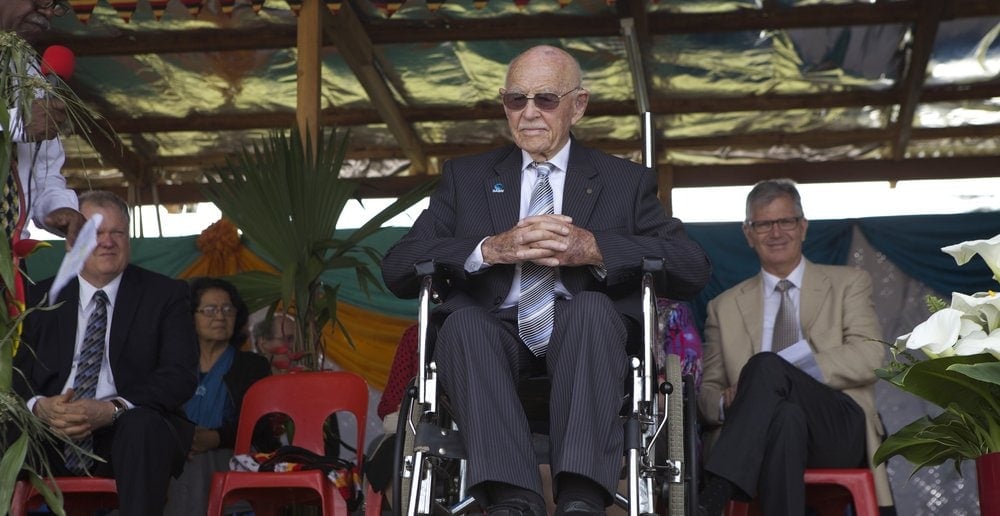
Death took some of the brightest lights in the Seventh-day Adventist Church in 2015.
Among those who died were household names like former General Conference president Robert S. Folkenberg Sr. and evangelist Ron Halvorsen Sr.
Others may not have been as well known, but they also made significant contributions in sharing the Advent message of Jesus’ soon coming: the first Adventist mission pilot, a former president of Home Study Institute, a physicist, and a former General Conference vice president who fought darkness on his knees for decades and spent his final months preparing his wife of 72 years for his death.
Here are 16 Adventists who died in 2015. Their voices may have fallen silent as they wait for Jesus’ return, but “by faith they still speak, even though they are dead” (Heb. 11:4, NIV).
(The deaths are ranked in chronological order, starting in January. Click on the headline — in blue — to read the full story.)

1. Leonard Barnard, 95, first Adventist mission pilot
Leonard Barnard, the Seventh-day Adventist Church’s first missionary pilot and co-founder of the aviation company used by the South Pacific Division, died in mid-January at the age of 95.
Barnard, an Australian national who began working for the Seventh-day Adventist Church in 1933, was best known for three decades of pioneering missionary work on the South Pacific island that includes Papua New Guinea.
“A most remarkable life has ended,” said John Hammond, who flew with Barnard many times in the mission plane Andrew Stewart. “We have lost one of our finest.”
Barnard, known to many as simply “Len,” decided to become a missionary on his first visit to Papua New Guinea during World War II when he served as a medic in the Australian Infantry Forces.
One day he was ordered to examine 50 local men who worked as carriers for the Australian military and had barely survived an arduous trek through the jungle. The men were malnourished and suffering from various tropical diseases, Barnard recalled in his book Banish the Night, rereleased by Pacific Press in 2013.
But the last six men, while weak, were noticeably healthier and happier than the rest of the group. After quizzing the six men, Barnard learned that they were fellow Adventists who had learned about Jesus from foreign missionaries. During the trek, they had declined to eat unclean wild animals caught by the party and had worshipped together daily.
“The striking contrast between the mission lads and the other carriers left an indelible impression upon my mind and awoke in me a desire to be a missionary,” Barnard wrote.

2. John R. Loor Sr., 87, longtime church administrator and product of Adventist education
At a time when financial turmoil at the church’s oldest boarding academy, the now-closed Mount Vernon Academy, put a new focus on Adventist schools in early January 2015, John R. Loor Sr. offered a reminder about the reason to invest in Adventist education.
Raised in an impoverished family with an often-absent alcoholic father, Loor completed his first nine years of education in Adventist schools because of the sacrificial giving of an Adventist church led by F.D. Nichol, editor of the Review and Herald (now the Adventist Review).
Loor later graduated from an Adventist college and became a longtime church administrator, serving as president of the Indiana and Northern New England conferences, pastor of the Southern Adventist University church, and even a model for book illustrations of Adam and Daniel that made him instantly recognizable among many Adventists.
Loor died surrounded by family in his home in Hendersonville, North Carolina, on Jan. 13. He was 87.
Even before Loor reached senior administrative positions in the church, he was held up at a General Conference Session as an outstanding product of Adventist education.
Nichol told the 1962 session in San Francisco how Loor had preached to 16,000 young people at a youth congress in Atlantic City, New Jersey, and how many in the audience had dedicated their lives to Jesus.
“He preached with power, cogency, and appeal,” Nichol said with Loor standing at his side, according to the biography, His Initials Were FDN.
“For a moment we were there in the auditorium listening intently, and then again we seemed to be far away visiting a poor little home, broken and blighted by drink, with a mother supported by a sacrificial church so she could send her boy to the church school,” Nichol said. “It was a very great day for us.”
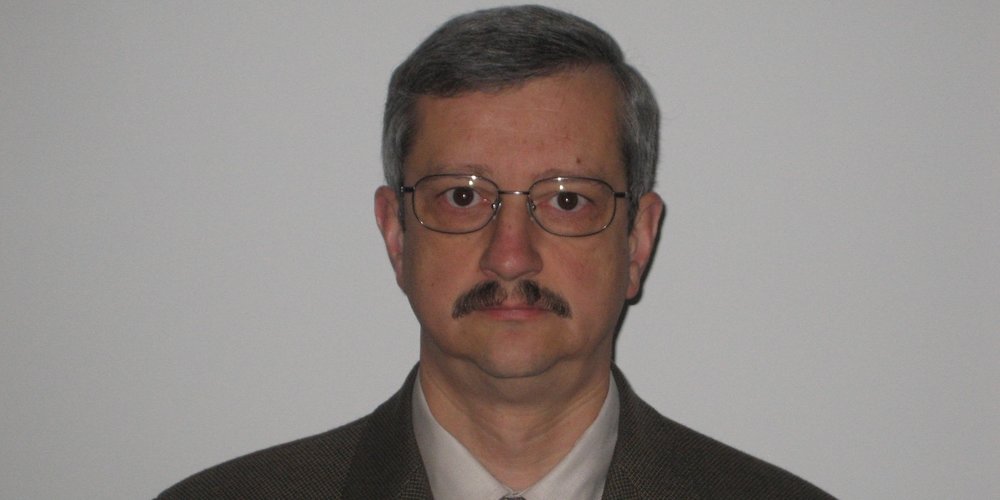
3. Erno Gyeresi, 54, driving force behind Andrews Study Bible
Erno Gyeresi, a Romanian pastor-turned-business executive who became a key force behind the popular Andrews Study Bible, died Jan. 31 after a long struggle with cancer. He was 54.
Gyeresi died peacefully on a Sabbath afternoon at his home in Niles, Michigan, with his family by his side.
Gyeresi spent the first 13 years of his career working as a pastor and church administrator in Romania, and the last 13 years of his life working at Andrews University Press, where he served as managing editor of the Andrews Study Bible, first released in the New King James Version in 2010.
He also was the managing editor of the same Bible in the New International Version; editorial consultant for the Romanian edition of the Bible; and managing editor of the Andrews Bible Commentary.
“His influence as both a theologian and businessman on the work of the church’s only regularly established academic publishing house will long be felt through our roster of important works in the last 13 years, and particularly through the ministry of the Andrews Study Bible,” said Ronald Knott, director of Andrews University Press.
“The listing of his name in such a vital position in every one of the scores of thousands of copies of the Bible that have been distributed around the world is only a token acknowledgment of the truly profound influence he had on the development of that landmark publication,” Knott said.
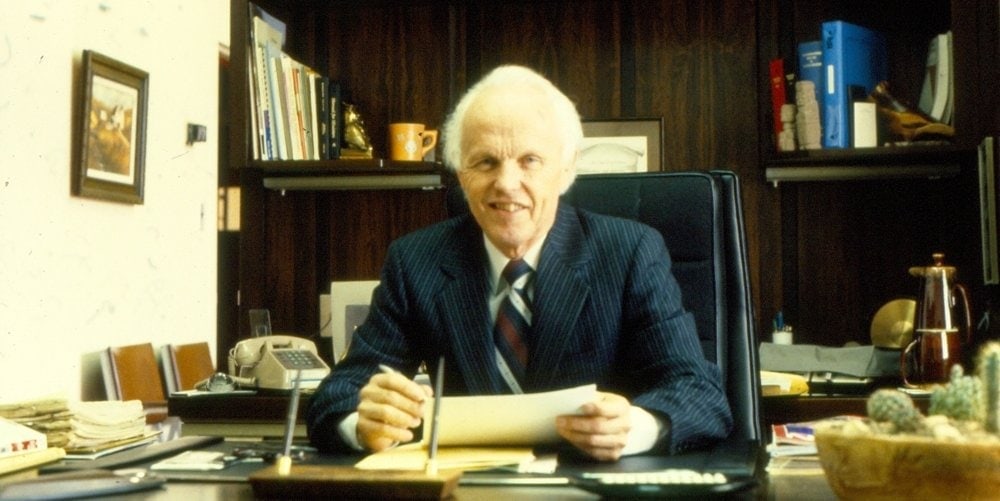
4. Delmer Holbrook, 92, church leader who put ‘fun’ into Christian life
Delmer Holbrook was being shut out of the most important event of the Seventh-day Adventist Church.
Organizers of the 1980 General Conference session had told Holbrook that no space remained for him to set up a booth in Dallas, Texas. He would not be able to showcase Home Study Institute to the 25,000 delegates and guests attending the church’s quinquennial business meeting.
But Holbrook, known for boundless energy, creativity, and putting the word “fun” into Christian life, was not dismayed. He found a portable booth and pushed it around the session’s exposition hall, handing out T-shirts and information about the Adventist Church’s long-distance learning program.
Holbrook’s mobile booth proved a hit, attracting more attention than the regular booths, said Alayne Thorpe, president of Griggs University, as Home Study Institute is now known.
“He had the uncanny ability to find the best in both people and situations, and his enthusiasm was contagious,” Thorpe said. “He also was a person who did not let a few disappointments put him off track.”
Holbrook, who served for 20 years as president of Home Study Institute and with his wife led the General Conference’s Family Ministries department, lived life at full speed until shortly before his death at the age of 92, family and friends said. He died of congestive heart failure at 1:35 a.m. on March 2 in a hospital in Maryland.

5. Ray Hefferlin, 85, physicist and university professor
Ray Hefferlin, a globally renowned physicist and Southern Adventist University professor, died on March 7 in Collegedale, Tennessee, at the age of 85.
Hefferlin, who was born in Paris, France, and received his bachelor’s degree from Pacific Union College in 1951, accepted a position as professor at Southern Adventist University in 1955.
Hefferlin’s passion for physics was evidenced early on as a young professional. He spent the summers of 1957 and 1958 in California at the National Radiation Defense Lab and even witnessed two atomic blasts. His research there, combined with his job at Southern, led to consulting positions with Oak Ridge National Laboratory, near Knoxville.
During the 1960s Hefferlin received his first research grant and focused on experimental spectroscopy, studying the interaction between matter and radiated energy.
By the 1970s, he switched to more theoretical work and, along with Southern students and a colleague in New York, began creating a chart similar to the periodic table of elements that organized diatomic molecules in a way that highlighted their similar properties.
Always in pursuit of better data, Hefferlin led his team in refining this chart through the years. The end result was a definitive work that is being used today by students and scientists internationally.

6. Francis Wernick, 95, former General Conference vice president
Francis Wernick, a former General Conference vice president who died April 11 at the age of 95, long remembered how he discovered peace on his knees in a motel room after a disquieting doctrinal discussion with church leaders.
Wernick, who family and friends said showed a deep trust in God during his lifelong career in the Seventh-day Adventist Church, found that trust put to the test during his 1975-1985 stint as a general vice president of the General Conference.
He was asked to travel to California to help arbitrate a discussion between local church leaders and Walter T. Rea, author of The White Lie, a book that accused Adventist Church cofounder Ellen G. White of plagiarism.
“My dad met with them, and the meeting was full of darkness as these individuals expressed their doubts about what we believe as a church,” said Wernick’s son, Robert.
“Later in his motel room, my dad felt an oppressive blackness filling the room as his mind recalled the doubts and arguments expressed that evening. He could began to feel a chilling effect on him and his faith,” he said.
Wernick finally got on his knees and asked God to deliver him from the cloud of darkness and doubt.
“He knelt down by his bed and poured out his heart to God,” said Nancy Wilson, who is married to General Conference president Ted N.C. Wilson and has been a friend of the Wernick family for the past 23 years.
“I don’t remember how long he said that he struggled with the Lord, but eventually He gave him peace and a lasting confidence in His word,” she said. “When he got up from his knees, he never had a moment of doubt again.”
Robert Wernick said the peace filled his father instantly.
“Suddenly the darkness was lifted and cast out of the room and replaced with a peace that brought calm,” he said. “My dad never forgot this experience.”
Wernick died peacefully after a lengthy illness at the home of his son in Ooltewah, Tennessee, near Southern Adventist University. He spent his last months preparing his wife of 72 years for his death, the Adventist Review reported in February in a story that resonated strongly with readers.
Read After 72 Years Of Marriage, a Church Leader Prepares Wife for His Death
7. Ruy Nagel, 75, former South American Division president
Ruy Nagel, a former president of the Seventh-day Adventist Church in South America who steered the church through regional financial turmoil, died of a heart attack on May 1 in Porto-Alegre, Brazil. He was 75.
Nagel led the South American Division as treasurer and president during a period of great economic instability in the region. Brazil, before the stabilization of its real currency in 1994, experienced intense price inflation and financial mishandling.
Despite the turmoil, the Adventist Church saw satisfactory growth during that period, division treasurer Marlon Lopes said in April.
“Pastor Nagel was not afraid of making even unpopular decisions to keep the church on solid ground,” Lopes said.
Marino de Oliveira, a former division treasurer, described Nagel as a dedicated church administrator.
"He had a very clear focus on mission and appreciation of people — rather, the right people in the right places," he said.
Nagel was elected division president in 1995, a position he held until he was succeeded by the current division president, Erton Köhler, in 2007.
Köhler said Nagel “completed faithfully and worthily the mission that he received from the Lord.”
“Today I have the privilege of building on the foundation that he left and the vision of seriousness and commitment for mission that he so persistently reinforced,” Köhler said. “His work was so strong that it will continue long beyond his days.”

8. Robert Robinson, 72, ‘walking miracle’ who opened 1,500 churches in India
Robert L. Robinson, a missionary and church administrator who opened more than 1,500 Seventh-day Adventist churches and two schools in India despite serious health challenges, died after a sudden heart attack on May 3. He was 72.
Robinson — whose 37 years of mission service took him to Zambia, Malawi, Botswana, Tanzania, Sri Lanka, Russia, and finally India — could easily have opted for a quiet life in his hometown of Sutherlin, Oregon, after being diagnosed with type 1 diabetes at the age of 3.
But he determined on his sixth birthday to live a life of joy.
“I’m 6 and I’m sick, but I will smile and be happy,” he declared.
That attitude summarized the way that he handled the pain and discomfort that he faced throughout his life, said Brenda Robinson, his wife of 49 years.
“Every day he assumed was his last, and every day he determined he would accomplish all he could in the service of loving and caring for others as Jesus did,” she said. “His was a simple faith. If God said it, he believed it. He loved Jesus with all his heart and whatever opportunity came his way he believed was God’s providential leading.”
Rathinaraj John, president of the Adventist Church’s Southern Asia Division, which includes India, said Robinson would be sorely missed in a Hindu-dominated region where it is challenging to share Jesus.
“Bob Robinson was a great blessing to Southern Asia,” John told the Adventist Review. “Through him we were able to build more than 1,500 churches and a couple of schools in India.”

9. Ron Halvorsen Sr., 76, evangelist
Ron Halvorsen Sr., a New York gang member who gave his heart to Jesus at age 17 and became a Seventh-day Adventist evangelist who led thousands of people to baptism, died May 16 after a lengthy illness. He was 76.
Halvorsen was diagnosed with multiple myeloma, a cancer that starts in the bone marrow’s plasma cells and affects the whole body, in November 2014.
He had successfully fought off three previous bouts with cancer and believed that he would land on his feet again, making plans to travel to Norway and engage in other evangelistic activities, said Ruthie Jacobson, who prayed with Halvorsen just hours before he died.
“He was still working for the Lord,” she said, adding that he had recently told her that he still had a lot of work to do.
Condolences poured in from around the world, with friends describing Halvorsen as humble, approachable, and gracious.
“Elder Halvorsen was one of the Seventh-day Adventist Church’s great evangelists, and he preached the straight truth of the Bible,” said Ted N.C. Wilson, leader of the Adventist Church. “It hit home to those who listened attentively.”
“A giant has fallen. A true giant,” said John Bradshaw, director and speaker for It Is Written, where Halvorsen worked for more than a decade as an evangelist and prayer coordinator after he retired.

10. Alcyon Fleck, 93, co-founder of International Children’s Care
Alcyon Fleck, an Adventist pioneer in orphan care who co-established International Children’s Care, died May 25 in Walla Walla, Washington, at the age of 93.
Fleck, lovingly known to many children as “Mommy Fleck,” flew to Guatemala with her husband, pastor Kenneth Fleck, to open an orphanage after a devastating earthquake killed thousands of people in Guatemala City in 1976 and left many children homeless.
Robert Folkenberg Sr., then-president of the Adventist Church’s Central American Union and later General Conference president, had asked the Flecks if they would be willing to open the orphanage with seed money from La Liga, a Christian group of volunteer physicians in southern California.
The Flecks, based at the time in the U.S. state of Oregon, had lived as missionaries for many years in Central America, and Alcyon Fleck had long expressed an interest in assisting orphans there.
“There were so many starving, lonely children,” Alcyon Fleck said in recalling the invitation to work in Guatemala, according to a statement published on the website of International Children’s Care. “I just couldn't leave them all there with no hope for the future.”
The Flecks’ work in Guatemala led to the establishment of International Children’s Care in 1978. The charity’s board of trustees asked the Flecks to administrate the organization.
“Oh, how I wept today at the news of her passing,” Folkenberg said in a tribute to Fleck on his Facebook page. “But those tears of sorrow changed to scenes of incredible joy when I considered the day Jesus again introduces ‘Mommy Fleck’ to those children and their respective families!”
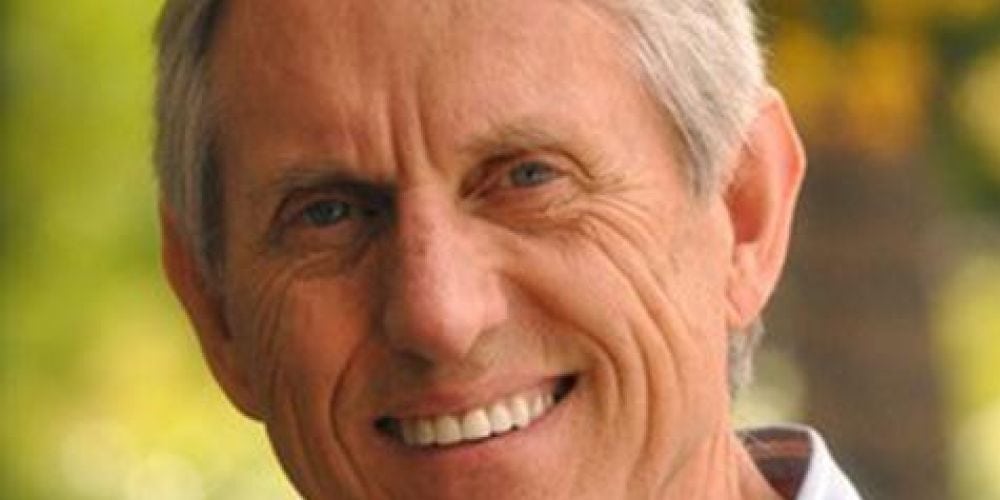
11. Warren Judd, 71, visionary Adventist media leader
Warren Judd, former CEO of the Adventist Media Center in California, died after a struggle with cancer on May 26.
Daniel R. Jackson, president of the North American Division, offered condolences on behalf of the Seventh-day Adventist Church.
“Warren was an accomplished media authority and talented musician. But most importantly, he was a devoted husband, father and a committed Christian,” Jackson said. “Warren helped significantly advance the use of audiovisual technology in the Adventist Church. He will be missed.”
Warren’s daughter-in-law, Andrea, expressed her gratitude to all those who have shown love and support for their family. She praised God for allowing her father to pass away peacefully, even though it was on her mother’s 70th birthday.
“Mum has been a rock through all of this. Certainly not without tears and great heartache, but with a greater faith!” Andrea said. “On top of it all, today is her 70th birthday. And she said, ‘I know many might feel differently and not understand, but I’m actually glad he died on my birthday. It makes it a very special and sacred day.’”
In addition to running the denominationally owned media center, Judd was responsible for the audiovisual operations of the last five General Conference Sessions, including San Antonio 2015, for which planning had been several years in the making.
Read Warren Judd’s life sketch
12. Roy Branson, 78, educator and advocate for social justice
Dr. Roy Branson, educator, mentor, ethicist, and advocate for social justice for many decades, died July 6 at the Loma Linda University Medical Center in California after suffering from a sudden heart attack. He was 78.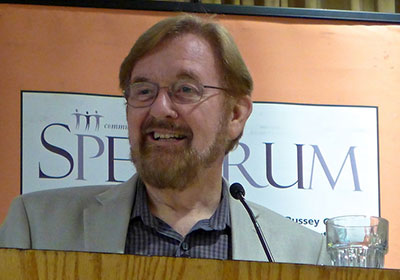
Branson most recently served as associate dean of the Loma Linda University School of Religion, and director of the Center for Christian Bioethics. He joined the university in 2008.
Throughout his career Branson was a fervent activist for various causes, from the civil rights movement to anti-smoking legislation, anti-poverty initiatives, and social, political and medical ethics. He received his undergraduate degree from Atlantic Union College and earned graduate degrees at the University of Chicago and Andrews University. He received his PhD in Religious Ethics from Harvard University in 1968.
He established the Christian Ethics program at the Seventh-day Adventist Theological Seminary while teaching at Andrews University and co-founded Spectrum magazine, an interdisciplinary quarterly journal, and served as editor for many years.

13. Eldyn Karr, 68, long-serving Voice of Prophecy public relations director
Eldyn Karr, who served as Voice of Prophecy’s public relations director for 40 years until his retirement in December 2014, died July 18 in Newbury Park, California, at the age of 68.
Karr was known for his intellect and impeccable memory, but his love for the Seventh-day Adventist Church and the Voice of Prophecy, the church’s 85-year-old pioneer in religious broadcasting, will likely remain his most enduring legacy.
“Only eternity will reveal the full reach of Eldyn’s efforts,” said Shawn Boonstra, Voice of Prophecy’s speaker and director since 2013. “He worked with every speaker/director of the Voice of Prophecy, and really helped to shape this ministry. And most importantly, his efforts led others to Christ. We feel so grateful to have worked with him, and look forward to seeing him again on that great day of reunion.”
The Voice of Prophecy inaugurated Christian broadcasting in the United States and is regarded as the forerunner of international broadcasting for the Adventist Church. H.M.S. Richards founded the evangelistic ministry in 1929 in Los Angeles with the radio program “Tabernacle of the Air.”
Karr joined the Voice of Prophecy in 1974 as its public relations director, a position he held until his retirement on Dec. 31, 2014. He also served as writer and editor for the Voice of Prophecy News.

14. William C. Pergerson II, 48, evangelist
William C. Pergerson II, a Seventh-day Adventist evangelist who once refused to share a pulpit with a woman wearing a ring but went on to make Christ and His righteousness the centerpiece of powerful, soul-winning sermons, died in a fiery airplane crash as he prepared for an evangelistic series. He was 48.
Pergerson, a longtime pilot, had just taken off from the airport in Battle Creek, Michigan, for the 20-minute flight to his home in Berrien Springs when his kit-built One Easy plane experienced suspected engine trouble on Aug. 27.
Pergerson, who was flying alone, tried to land twice, keeping in constant contact with the control tower.
But the plane came down in a grassy field near one of the runways during the second attempt at 8:19 p.m., exploding in a ball of fire, the airport said in a statement.
Firefighters rushed to the scene and quickly doused the blaze, but little remained of the plane other than the charred engine.
Pergerson cherished his private time with Jesus, waking up at 4 a.m. to spend two hours in devotions. He was known to exclaim: “No Bible, no breakfast! No Bible, no bread!”

15. Alberto C. Gulfan Jr., 64, former Southern Asia-Pacific Division president
Alberto C. Gulfan Jr., a passionate evangelist who conducted five to six evangelistic series a year even during his 12 years as president of the Southern Asia-Pacific Division, died Sept. 26 after a lengthy battle with cancer. He was 64.
Gulfan, a lifelong Seventh-day Adventist, also had a quiet, humble leadership style and a love for tennis that endeared him to friends and colleagues.
“He was a wonderful champion of God’s truth and evangelistic proclamation,” Adventist world church president Ted N.C. Wilson said in a condolence letter to Gulfan’s wife, Helen Bocala-Gulfan, and three adult children. “Pastor Gulfan’s many years of service for the Lord are a testimony to God’s power in using an individual in powerful ways for His remnant church.”
Close friends said Gulfan would be best remembered for his passion for sharing Jesus.
“He was an evangelist at heart,” said G.T. Ng, executive secretary of the Adventist world church, who first began working with Gulfan as a professor at the Adventist International Institute of Advanced Studies, or AIIAS, in the 1990s. Gulfan worked as president of the church’s Central Philippine Union Conference, whose territory included the school. “Evangelism was in his blood and was his constant refrain.”
Gulfan served the church in a 42-year career that culminated with his election in June 2003 as president of the Southern Asia-Pacific Division, which covers the Philippines, Indonesia, and 12 other countries. He stepped aside because of his illness at the church’s General Conference session in July 2015.

16. Robert S. Folkenberg Sr., 74, former Adventist Church president
Robert S. Folkenberg Sr., an innovative church administrator and mission advocate who led the Seventh-day Adventist Church for nine years, died Dec. 24 after a lengthy struggle with cancer. He was just days from his 75th birthday.
Folkenberg felt that Adventists had an exciting message to share and the Internet was a great way to expand the church’s reach. The Adventist Church, he believed, could use the Internet to provide information, training, and experiences that better demonstrated the global aspect of its mission.
He pushed the church forward with new technology during his tenure as president of the General Conference of Seventh-day Adventists from 1990 to 1999 and brought CompuServe, a precursor to the World Wide Web, into use within the church, making Seventh-day Adventists the first denomination to use such technology.
Folkenberg also had a great passion for mission, the driving force of his ministry. During his time as world church president, he helped start the Global Mission initiative, which has been responsible for establishing thousands of new congregations around the world.
“We could have not asked for a greater support than Folkenberg for Global Mission,” said Michael L. Ryan, the first director of Global Mission and a former general vice president of the General Conference.
As president, Folkenberg also promoted the Net Evangelism series with Mark Finley and Dwight Nelson and worked to get the Hope Channel started.
Also read “My Straight A’s Friend, Bob Folkenberg,” by lifelong friend Jim Gilley
17. Last but not least
We cannot complete a year-end list without paying tribute to the many other faithful Adventists who died in 2015, some from natural causes but many others in unthinkable tragedies.
We remember the 10 Adventist students who were among the 148 people slain when four Islamist militants stormed a Kenyan university in an attack against Christians on April 2. One of those slain was Eric Nyumbuto, leader of the student-led Adventist church on the campus of Garissa University College, a public school in northeastern Kenya.
We remember Sarena Moore, a 44-year-old student and mother of two, who was among the nine people killed in a shooting rampage that targeted Christians at a community college in the U.S. state of Oregon in October.
We remember three preteen boys who died in nighttime blaze at an Adventist boarding school in Kenya on March 7. The boys courageously saved the lives of their sleeping classmates by waking them up then returned to the building to retrieve their belongings.
We remember four students from Adventist universities in the United States: Walla Walla University sophomore Madison “Maddy” Baird, 20, who died after being struck by a pickup truck while riding a bicycle in February; Kimberly Andreu, 21, a second-year freshman majoring in allied health, who was found dead in her dormitory at Southern Adventist University in March; Nicholas Culver, a first-year student and basketball player who was found dead at La Sierra University on Dec. 8; and Whitney Watson, 18, a sophomore double major in math and viola at Andrews University, who didn’t wake up in the morning while camping in the mountains on Dec. 15.
We remember Indianapolis Junior Academy principal Norris Ncube and his young son and niece who died in a car accident on Oct. 6 as Ncube drove a group of students to school.
A road tragedy also claimed the lives of three church members from the Bethesda French Seventh-day Adventist Church in Brooklyn in May, while a fire killed four Adventist family members in Massachusetts in early December.
We don’t understand why Akim Zhigankov, the 23-year-old son of Adventist professors in the Philippines, died after a mysterious illness in February, or why Will Green, 23, a long-time staff member at Cohutta Springs Youth Camp and winner of wakeboard competitions, died in a water accident at the Adventist-owned camp in June.
We mourn for Diana, a cheery 11-year-old Syrian refugee girl who loved God and was attending an Adventist school in Lebanon when she died from a baffling illness in January.
We pray for closure and Jesus’ soon return with the news in early December that Ukrainian police have tentatively identified a body recovered from a building’s ventilation shaft in Kiev as that of Dr. Jay Sloop, 77, the U.S. physician from Yakima, Washington, who went missing while on an Adventist health training visit to the country in 2013.
Even so, come, Lord Jesus.